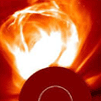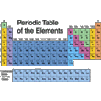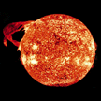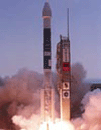| |
|
|
 |
|
 |
|
 |
|
 Welcome to Genesis in Education. Genesis education
modules are written for K-12 classroom teachers
and capture student interest by using the Genesis
mission as a real-world link. Aligned with the
content, instruction, and assessment guidelines
set forth by the National Research Council, Genesis
science modules can be easily inserted in place
of traditional units within a typical secondary
school science curriculum. Enjoy a variety of
educational products for home and school (see
Topics),
including online lesson plans, teacher guides
and student activities, suggested assessments,
and lists of additional resources and references.
Welcome to Genesis in Education. Genesis education
modules are written for K-12 classroom teachers
and capture student interest by using the Genesis
mission as a real-world link. Aligned with the
content, instruction, and assessment guidelines
set forth by the National Research Council, Genesis
science modules can be easily inserted in place
of traditional units within a typical secondary
school science curriculum. Enjoy a variety of
educational products for home and school (see
Topics),
including online lesson plans, teacher guides
and student activities, suggested assessments,
and lists of additional resources and references.
|
| High
School | Middle
School | Elementary
School |
|
 |
 |
 |
 |
Secondary
Ion Mass Spectrometry Mini Module
(pdf)
This mini-module focuses on the analysis
of the Genesis solar wind samples. + See Interactive
|
 |
|
  |
 |
Data
Analysis and Generalizations
Data Analysis and Generalizations is an
advanced high school module or post-secondary
module that engages students in studying real
solar wind information collected from the
Genesis spacecraft and posted on the Los Alamos
National Laboratory (LANL) Genesis
Science Data Web site.
|
Cosmic
Chemistry: An Elemental Question
 An
Elemental Question focuses on classifying
and organizing information. With the periodic
table as their guide, students predict missing
information based on scant evidence and focused
questioning. Their quest is to find the missing
evidence that is needed for further understanding
of our solar system.
An
Elemental Question focuses on classifying
and organizing information. With the periodic
table as their guide, students predict missing
information based on scant evidence and focused
questioning. Their quest is to find the missing
evidence that is needed for further understanding
of our solar system.
|
Cosmic
Chemistry: The Sun and Solar Wind
 The
Sun and Solar Wind explores the development
of the Standard Solar Model and its limitations
by available instrumentation and analytical
technology. Through understanding of NASA
mission research on solar wind, students use
their observations and data to investigate
the reliability of present models. The
Sun and Solar Wind explores the development
of the Standard Solar Model and its limitations
by available instrumentation and analytical
technology. Through understanding of NASA
mission research on solar wind, students use
their observations and data to investigate
the reliability of present models. |
|
 |
| |
Cosmic
Chemistry: Planetary Diversity
 Planetary
Diversity acquaints students with some
current theories on our solar system's formation.
In the absence of a universally-accepted model,
students examine some proposed models and
the degree to which these models explain possible
patterns of planet composition, internal structure,
and atmosphere.
Planetary
Diversity acquaints students with some
current theories on our solar system's formation.
In the absence of a universally-accepted model,
students examine some proposed models and
the degree to which these models explain possible
patterns of planet composition, internal structure,
and atmosphere.
|
| |
Cosmic
Chemistry: Cosmogony
 Cosmogony
helps students explore the difficulties of
conducting science on the scale of the universe.
Classroom activities examine contemporary
models of the origin of the universe, time
and distance, and the strategy of working
backward from a known final state to a reasonable
initial state.
Cosmogony
helps students explore the difficulties of
conducting science on the scale of the universe.
Classroom activities examine contemporary
models of the origin of the universe, time
and distance, and the strategy of working
backward from a known final state to a reasonable
initial state.
|
Subscribe to Genesis E-News
In order to better serve you, McREL Genesis Education
and Public Outreach provides a free
text-based e-mail newsletter service.

“Best of 2001–2003”
Browse
the Genesis mission e-newsletter archives. |
  |
 |
Destination
L1: A Thematic Travel Unit
 The
module Destination
L1: A Thematic Travel Unit takes
a thematic approach to the concept of
traveling and destinations. All of the
major disciplines are included in a unit
that can be taught simultaneously in
all classes lasting about one week. The
context for this module is the million-mile
journey that the Genesis spacecraft took
to LaGrange point 1, also known as L1.
Background information for this module
includes the concept of L1 from a historical
and mathematical perspective. The
module Destination
L1: A Thematic Travel Unit takes
a thematic approach to the concept of
traveling and destinations. All of the
major disciplines are included in a unit
that can be taught simultaneously in
all classes lasting about one week. The
context for this module is the million-mile
journey that the Genesis spacecraft took
to LaGrange point 1, also known as L1.
Background information for this module
includes the concept of L1 from a historical
and mathematical perspective.
|
Dynamic
Design: Launch and Propulsion
 In Dynamic
Design: Launch and Propulsion, students
become familiar with how rockets are
launched. In this module, students learn
about the history of rocketry and work
with variables that might affect the
performance of a launch vehicle. Students
work in teams to investigate one variable,
in detail, by performing tests. By completing
these tests they will learn the various
aspects of launching a rocket. In the
assessment, students engage in a competition
whereby they apply what they have learned
about rockets to build a launch vehicle
that flies as high as possible. In Dynamic
Design: Launch and Propulsion, students
become familiar with how rockets are
launched. In this module, students learn
about the history of rocketry and work
with variables that might affect the
performance of a launch vehicle. Students
work in teams to investigate one variable,
in detail, by performing tests. By completing
these tests they will learn the various
aspects of launching a rocket. In the
assessment, students engage in a competition
whereby they apply what they have learned
about rockets to build a launch vehicle
that flies as high as possible.
|
Dynamic
Design: The Cleanroom
 Dynamic
Design: The Cleanroom Dynamic
Design: The Cleanroom
This education module focuses on the Genesis mission cleanroom at
NASA Johnson Space Center near Houston, Texas. In Dynamic
Design: The Cleanroom, students experience the requirements and
conditions of working in NASAźs cleanest room. The Genesis
Cleanroom Trilogy page features the Genesis Cleanroom Interactive
Field Trip and the Cleanroom Technology video that accompany this
module. |
|
 |
| |
Heat: An
Agent of Change
 Heat:
An Agent of Change focuses on the relationship
between basic physical science concepts of
heat and the challenges faced by the engineers
designing the Genesis spacecraft. Controlling
the movement of heat to prevent unwanted changes
in materials requires basic understandings
about thermodynamics. Heat:
An Agent of Change focuses on the relationship
between basic physical science concepts of
heat and the challenges faced by the engineers
designing the Genesis spacecraft. Controlling
the movement of heat to prevent unwanted changes
in materials requires basic understandings
about thermodynamics.
|
| |
Cosmic Chemistry:
Understanding Elements
 Cosmic
Chemistry: Understanding Elements explores
periodic table elements by their characteristics--much
like Dmitri Mendeleev did in the 19th century.
By asking questions about the building blocks of
our solar system, students create mathematical
models to explain differences in chemical reactivity
among elements. Cosmic
Chemistry: Understanding Elements explores
periodic table elements by their characteristics--much
like Dmitri Mendeleev did in the 19th century.
By asking questions about the building blocks of
our solar system, students create mathematical
models to explain differences in chemical reactivity
among elements.
|
| |
Exploring
Origins
 Exploring
Origins helps students explore ideas about
the origins of the solar system held by various
cultures throughout the ages. Students discover
that Genesis is providing data to answer age-old
questions: How did the solar system come to be
as we see it today? What happened when our sun
and the planets formed? What elements were present
at the time they formed? Exploring
Origins helps students explore ideas about
the origins of the solar system held by various
cultures throughout the ages. Students discover
that Genesis is providing data to answer age-old
questions: How did the solar system come to be
as we see it today? What happened when our sun
and the planets formed? What elements were present
at the time they formed?
|
| |
Dynamic
Design: A Collection Process
 Dynamic
Design: A Collection Process engages students
in a data collection process using the Genesis
solar wind collectors as an example. They will
work in production design teams to explore how
the Genesis spacecraft will collect bulk solar
wind with the collector arrays. Dynamic
Design: A Collection Process engages students
in a data collection process using the Genesis
solar wind collectors as an example. They will
work in production design teams to explore how
the Genesis spacecraft will collect bulk solar
wind with the collector arrays. |
|
|
|
| |
 |
Genesis Kids
 Genesis
Kids is our answer to the frequent question, "What
do you have for elementary students?" Genesis Kids
offers mission-related classroom activities, online interactive
exercises, "Ask Blast," which lets us respond
to students' science questions via e-mail, and some fun
print activity pages. Genesis
Kids is our answer to the frequent question, "What
do you have for elementary students?" Genesis Kids
offers mission-related classroom activities, online interactive
exercises, "Ask Blast," which lets us respond
to students' science questions via e-mail, and some fun
print activity pages.
Genesis Webcast
Mathematics and science teachers, would
you like to conduct the Webcast activity
with your students? Print the teacher
guide, student
text, and  student
activity in Acrobat pdf format. student
activity in Acrobat pdf format. |
|
|
|
| |
|
|
|
|
|
|
